The mobile gaming industry is booming. In fact, according to Newzoo, the global gaming market is expected to surpass $159 billion in 2024, with mobile gaming accounting for over half of that revenue. As a result, the competition is fierce, and the pressure on game developers to stand out with a successful launch is higher than ever before.
However, despite the vast potential, many mobile game developers still encounter significant challenges during and after their game launch. From poorly executed marketing strategies to user experience issues, the road to success is filled with potential pitfalls that can result in costly mistakes. One simple misstep can cause a game to fall flat in a highly competitive market, leading to low downloads, negative reviews, and ultimately, failure.
In this blog, we will explore the top mistakes to avoid when launching a mobile game app and provide actionable strategies to help you sidestep these costly errors. Whether you’re a developer preparing for your first game launch or an experienced professional looking to fine-tune your strategy, this guide will equip you with the knowledge you need to ensure a successful debut for your mobile game.
By understanding these key mistakes and how to avoid them, you can increase your chances of achieving lasting success in the fast-paced and ever-evolving mobile gaming industry. So, let’s dive into the common pitfalls that could derail your launch and discover the best practices that will set you up for success.
I. Mistake #1: Insufficient Pre-Launch Planning
One of the most common—and costly—mistakes developers make when launching a mobile game is diving in without a solid pre-launch plan. Pre-launch activities are crucial for setting the stage for success. A lack of strategy can result in missed opportunities, low visibility, and a poor first impression, which can be difficult to recover from once the game is live.
Consequences of Insufficient Pre-Launch Planning
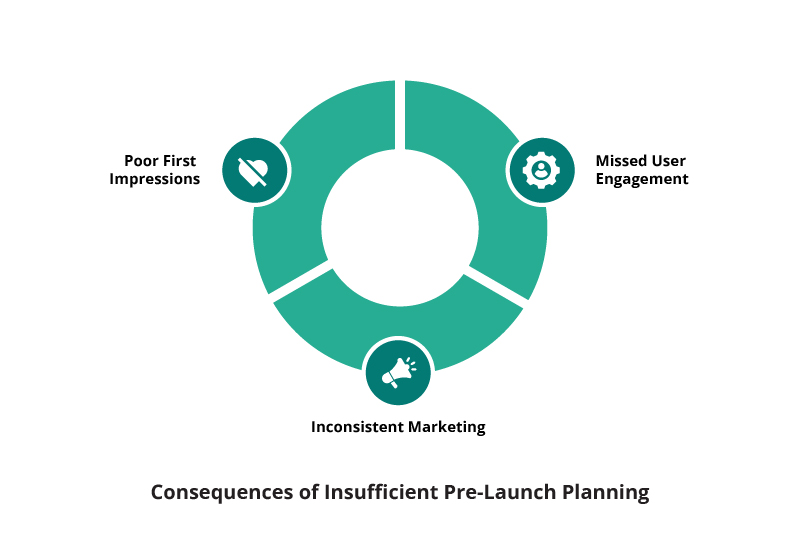
- Missed User Engagement: Without building excitement ahead of time, users may not feel compelled to download the game when it’s released.
- Inconsistent Marketing: Without a clear marketing plan, you may struggle to generate buzz, making it harder to reach your target audience.
- Poor First Impressions: A lack of user feedback or testing before launch can lead to poor reviews and early uninstall rates, which can drastically affect your game’s reputation.
How to Avoid This Mistake
- Develop a Comprehensive Marketing Strategy: Start planning early. Build a marketing calendar that includes social media posts, influencer partnerships, PR campaigns, and community outreach. Make sure you create a buzz about your game even before it’s launched to ensure that your game has visibility when it hits the stores.
- Conduct Beta Testing: Before the official launch, release a beta version of the game. This allows you to gather valuable feedback from real users and identify potential issues or bugs. Testing also gives you a sense of how players interact with the game and what they love or dislike about it, enabling you to make necessary improvements.
- Optimize Your App Store Listing: Invest time in crafting a compelling app store listing. Use high-quality visuals, such as screenshots and trailers, to attract users. Ensure your app’s title and description include relevant keywords to improve its discoverability. Your app store optimization (ASO) strategy is critical to driving organic downloads, so don’t overlook it.
II. Mistake #2: Overlooking App Store Optimization (ASO)
App Store Optimization (ASO) is one of the most crucial elements of a successful mobile game launch. Yet, many developers fail to fully leverage this strategy, resulting in poor visibility and fewer downloads. ASO is the process of optimizing your game’s listing on app stores (like Google Play and Apple App Store) to rank higher in search results, which increases the chances of attracting users organically.
Consequences of Overlooking ASO
- Poor Discoverability: Without proper optimization, your game may not appear in search results, making it difficult for potential players to find it.
- Missed Opportunities for Organic Growth: In-app advertising can be costly. Without effective ASO, you’re more reliant on paid campaigns to drive traffic to your app, which can eat into your budget.
- Low Conversion Rates: Even if users find your game, an unoptimized listing could fail to convert them into downloads. If your game’s title, description, or visuals aren’t compelling enough, users might scroll past it.
How to Avoid This Mistake
- Keyword Optimization: Just like SEO for websites, ASO requires the strategic use of keywords. Identify relevant keywords that players might use to search for a game like yours. Incorporate these keywords naturally into your app’s title, description, and tags. This will increase your game’s visibility when users search the app store.
- Compelling Game Description: The description is one of the first things users read, so it needs to be clear, engaging, and informative. Highlight the unique features of your game, such as its gameplay, story, and visual appeal. Be sure to include keywords without making the description sound too much like a sales pitch.
- Engaging Visuals: High-quality visuals are essential for standing out in the crowded app stores. Include eye-catching screenshots, gameplay videos, and a captivating app icon. Your game’s screenshots should showcase the best features, while the video should give potential users a preview of the gameplay experience.
- Encourage Reviews and Ratings: Positive reviews and high ratings can boost your app’s ranking in the app store. Encourage satisfied players to leave reviews and respond to feedback—both positive and negative. This shows that you’re actively listening to your users and improving the game.
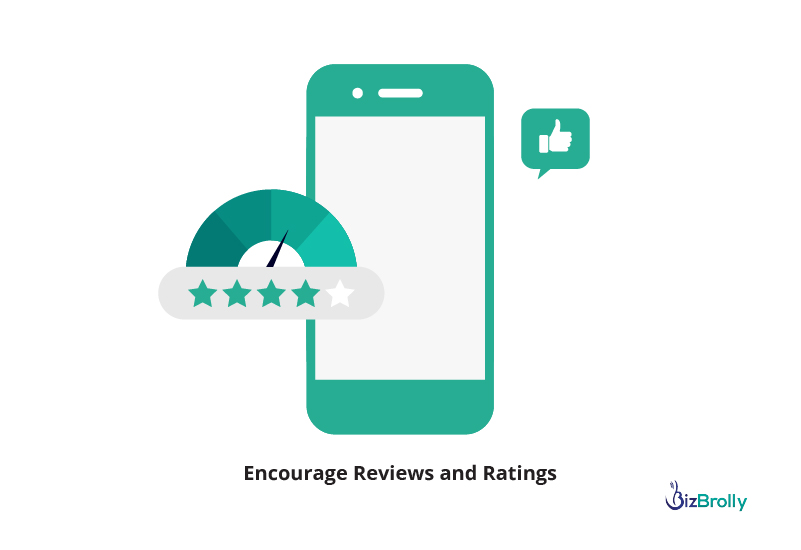
- Regularly Update Your Store Listing: ASO isn’t a one-time effort; it requires continuous monitoring and updates. As your game evolves with new features and updates, make sure your app store listing reflects these changes. Regularly update screenshots, videos, and descriptions to ensure that the app stays fresh and relevant.
III. Mistake #3: Ignoring Post-Launch User Feedback
Many developers focus heavily on the pre-launch phase and the launch itself, but often neglect one of the most important phases—post-launch. Once your game is live, the feedback from your users becomes critical. Ignoring or failing to act on this feedback can lead to negative reviews, decreased player engagement, and ultimately, a decline in downloads.
Consequences of Ignoring Post-Launch Feedback
- Negative Reviews: If players encounter issues or frustrations with your game and feel their concerns are ignored, they’re likely to leave negative reviews. A high volume of poor reviews can damage your game’s reputation and significantly impact its visibility.
- Player Frustration: Ignoring feedback means that common bugs, performance issues, or user experience problems may go unresolved, causing players to stop playing the game or abandon it altogether.
- Missed Opportunities for Improvement: User feedback provides valuable insights into gameplay preferences, bugs, or features that players want. Ignoring this input means missing opportunities to enhance your game and retain players.
How to Avoid This Mistake
- Actively Monitor Reviews and Ratings: Keep a close eye on the reviews across different app stores, as well as social media platforms, forums, and other communities. Identify common complaints or suggestions and prioritize resolving them. Addressing recurring issues shows users that you’re listening and care about their experience.
- Respond to User Feedback: Engage with your players by responding to their feedback, both positive and negative. Acknowledge their concerns, thank them for their input, and let them know if improvements are underway. This can help foster a loyal user base and improve your game’s reputation.
- Regular Updates and Bug Fixes: One of the most important ways to show you’re listening is by pushing regular updates that address the issues players raise. These can include bug fixes, performance improvements, and new features. Make sure to highlight the changes in the update notes so players know their feedback has been heard.
- Incorporate Feature Requests: Many users will suggest features or improvements that could enhance the gaming experience. If feasible, consider adding these requested features in future updates. A game that evolves based on player feedback is more likely to maintain a loyal and engaged user base.
- Engage with Your Community: Use social media, in-game surveys, and community forums to further engage with your audience. By encouraging communication with players, you can gain insights into their expectations and preferences. This helps you build a strong community around your game, which can contribute to long-term success.
IV. Mistake #4: Neglecting Monetization Strategies
While the excitement of launching a mobile game is exhilarating, one of the most crucial aspects of a successful launch, especially for developers who rely on game revenue, is effective monetization. Failing to implement the right monetization strategies can result in poor financial performance, even if the game is well-received by players.
Monetization is not just about making money; it’s about finding the right balance between providing value to your users and generating sustainable revenue. Overloading players with ads or making in-game purchases too aggressive can damage the user experience and lead to uninstalls.
Consequences of Neglecting Monetization Strategies
- Low Revenue: Without an effective strategy, you may struggle to generate the income necessary to support continued development and marketing efforts.
- User Frustration: If monetization tactics are too aggressive, such as constant ads or pay-to-win mechanics, players can quickly become frustrated and abandon the game.
- Missed Opportunities for Growth: Not implementing a tiered monetization system (e.g., in-app purchases, ads, subscriptions) can result in missed opportunities to generate revenue from a variety of user segments.
How to Avoid This Mistake
- Choose the Right Monetization Model: There are several monetization strategies, and it’s important to choose one (or a combination) that suits your game and your target audience. Common models include:
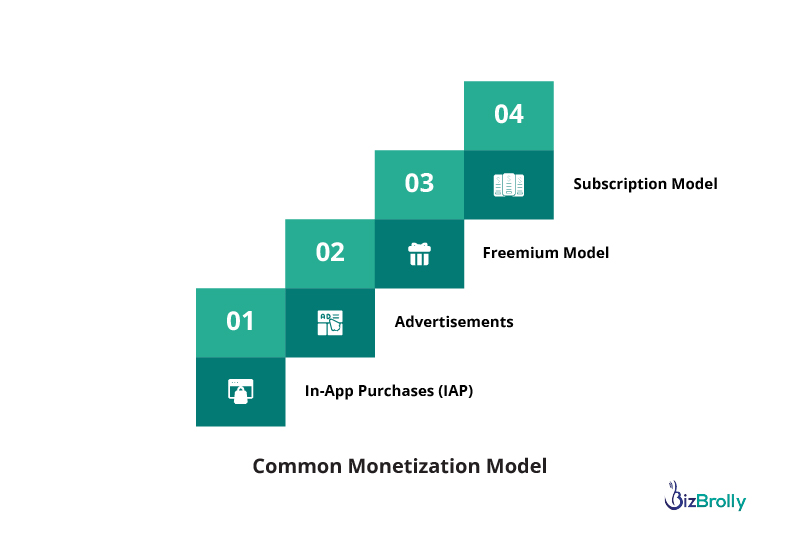
- In-App Purchases (IAP): Allow players to buy virtual goods, power-ups, or content within the game.
- Ads: Integrating ads, such as banner ads or rewarded video ads, can provide a steady stream of revenue without disrupting gameplay.
- Freemium Model: Offer the game for free but provide additional paid features or content that enhance the player experience.
- Subscription Model: Offer players a premium subscription with benefits such as exclusive content, features, or ad-free gameplay.
- Understand your audience and what they’re willing to spend, and tailor your monetization strategy accordingly.
- Implement Non-Intrusive Ads: If you opt for ad-based monetization, make sure ads don’t disrupt the player experience. Rewarded video ads (where users watch ads in exchange for in-game rewards) are a great way to balance monetization with user engagement. Players should feel that they’re receiving value in exchange for watching ads.
- Provide Meaningful In-App Purchases: In-app purchases should feel like they add value to the player’s experience rather than being mandatory for progress. Offering cosmetic items, extra levels, or non-competitive boosts (like skins or accessories) tends to resonate better with players than pay-to-win mechanics that alienate non-paying users.
- Test and Iterate Your Monetization Strategy: Don’t be afraid to experiment with different monetization strategies, especially during the early stages of your game’s life. A/B testing can help determine which methods provide the most revenue without alienating your player base. Continuously evaluate and refine your strategy based on feedback and performance metrics.
- Offer a Fair Value Exchange: Make sure your players feel that they’re getting good value for their money. Whether through in-app purchases, subscriptions, or ads, users should feel that what they’re spending enhances their overall experience. If players perceive that they’re being unfairly charged or overburdened with ads, they’ll quickly move on to other games.
V. Mistake #5: Failing to Optimize Game Performance
One of the biggest turn-offs for users is poor game performance. Whether it’s slow load times, crashes, bugs, or poor graphics, performance issues can immediately cause users to abandon a game. A game that doesn’t run smoothly is frustrating to play, and frustrated users are quick to leave negative reviews, which can significantly harm your app’s reputation. In the competitive mobile gaming market, players have high expectations, and any performance issues can cost you in terms of both retention and new downloads.
Consequences of Failing to Optimize Game Performance
- Increased Uninstalls: Slow or buggy games lead to players uninstalling the app, which reduces your game’s ranking and future download potential.
- Negative Reviews: Performance problems often prompt users to leave poor reviews, which can discourage others from downloading the game.
- Loss of Engagement: If the game crashes frequently or has issues with lag, users are less likely to stick around, leading to low retention rates.
How to Avoid This Mistake
- Conduct Thorough Testing: Before launching, conduct extensive quality assurance (QA) testing across multiple devices and operating systems to identify any performance issues. Testing should cover both functionality and optimization, ensuring that the game runs smoothly on a wide range of devices, from budget to high-end smartphones and tablets.
- Optimize Graphics and Code: Make sure your game’s graphics are optimized for mobile devices. High-resolution textures and complex models can strain device resources, leading to lag or crashes. Simplify the graphics where possible without compromising the user experience. Similarly, optimize the game’s code to reduce memory usage and improve responsiveness.
- Monitor Post-Launch Performance: After launch, continue monitoring the game’s performance using analytics tools. Track metrics like load times, crashes, and user retention. Pay attention to areas where players drop off and investigate the causes. If specific devices or operating systems are causing issues, prioritize updates to address those concerns.
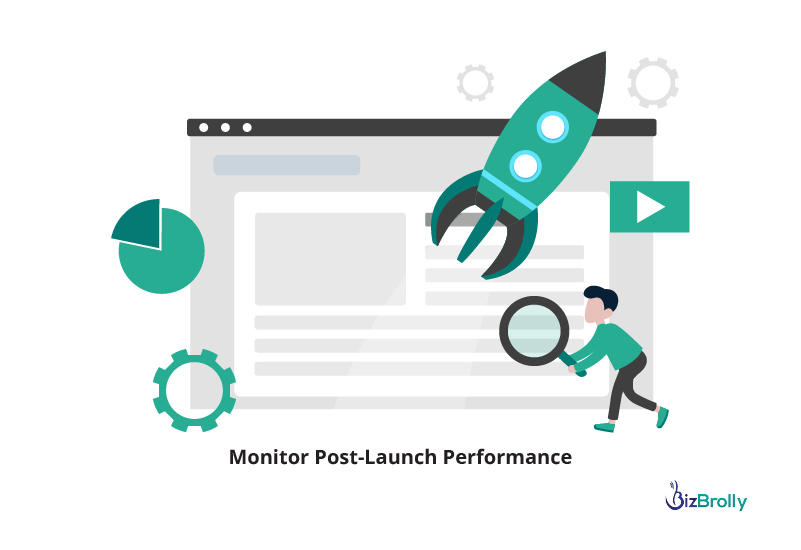
- Implement Performance Updates Regularly: Don’t wait for users to report performance issues. Regularly update the game to improve performance, fix bugs, and optimize load times. Smaller, incremental updates are often better than waiting for large updates, as they can keep the game running smoothly without overwhelming users.
- Offer Offline Mode (If Possible): Offering offline functionality (where feasible) can be a game-changer for players in areas with poor internet connectivity. This also improves the overall experience by allowing the game to be played seamlessly, regardless of network conditions.
VI. Mistake #6: Underestimating Marketing & Pre-Launch Activities
Many developers underestimate the importance of a robust pre-launch marketing strategy. Without proper marketing efforts, even the most well-developed game can struggle to gain traction once it’s released. A lack of visibility and a weak pre-launch campaign can lead to a slow start, which can be difficult to recover from. Successful mobile game launches depend not only on having a great game but also on building anticipation and awareness among your target audience before the app goes live.
Consequences of Underestimating Marketing & Pre-Launch Activities
- Low Initial Downloads: Without awareness and anticipation, your game may not see a strong number of initial downloads, which can hurt your app’s chances of ranking high on app stores.
- Weak User Base Growth: Early marketing efforts help build a loyal user base. Without them, you could miss out on loyal players who spread the word and continue playing for months.
- Delayed Recognition: A delayed or weak marketing push can make it harder for your game to reach its full potential. By the time the marketing picks up, you might be too far behind your competition in terms of visibility and user acquisition.
How to Avoid This Mistake
- Develop a Comprehensive Pre-Launch Marketing Plan: Plan your marketing efforts well in advance of your game’s release. This should include social media promotion, influencer partnerships, teaser videos, and email marketing campaigns. Build hype around your game by offering sneak peeks, behind-the-scenes content, and exclusive early access to generate excitement.
- Create a Landing Page or Website: A dedicated website or landing page for your game is essential for establishing an online presence. This page can include details about the game, trailers, news updates, and a countdown to the official launch. Use it to capture email sign-ups, which can later be converted into active users once the game launches.
- Leverage Social Media & Communities: Start engaging with your audience early through social media platforms like Instagram, Twitter, Facebook, and TikTok. Join relevant gaming communities (Reddit, Discord, etc.) to build buzz and receive early feedback. Post regularly with content like development updates, gameplay teasers, and engaging polls to keep the conversation alive.
- Collaborate with Influencers: Partner with gaming influencers and content creators to showcase your game before launch. Influencers have established followings that can give your game early exposure. Consider offering exclusive access, special in-game items, or sponsored content to get the influencers on board.
- Offer Beta Access or Closed Tests: A beta release or closed testing phase allows players to experience the game before it’s officially launched. This not only builds excitement but also gives you valuable feedback on game mechanics, bugs, and gameplay balance. Players who get early access feel more invested in your game, increasing the likelihood of them becoming long-term users.
- Build a Press Kit: Having a professional press kit available for journalists, bloggers, and influencers makes it easier for them to write about your game. Include high-quality images, trailers, a description of the game, and key details like the launch date and platform availability. A well-crafted press kit can help secure media coverage and create early buzz.
- Run Pre-Launch Ads: Invest in advertising to get the word out about your game ahead of launch. Paid social media ads, Google ads, and influencer marketing can help target the right audience and create buzz. Ensure your ad campaigns are optimized to reach potential players who are likely to download and engage with your game.
VII. Mistake #7: Ignoring Post-Launch Updates & Support
The launch of your mobile game is just the beginning. Many developers make the mistake of thinking that once their game is live, the job is done. However, the success of a mobile game depends heavily on ongoing post-launch support, updates, and player engagement. Failing to continue improving and addressing issues after launch can result in declining user retention, negative reviews, and ultimately, a loss of player interest.
Consequences of Ignoring Post-Launch Updates & Support
- User Frustration: If bugs and performance issues persist post-launch without being addressed, players become frustrated and are more likely to uninstall or leave negative reviews.
- Declining Retention: Without regular updates, players can lose interest, especially if there’s a lack of new content or features to keep them engaged. This leads to poor retention rates.
- Reputation Damage: Ignoring feedback and failing to fix critical issues reflects poorly on the developer and can damage the game’s reputation long-term. Users expect consistent improvements and support from developers.
How to Avoid This Mistake
- Set a Post-Launch Roadmap: Before launching your game, create a roadmap for post-launch updates. Include planned content updates (new levels, characters, features), bug fixes, and improvements. A clear roadmap gives users something to look forward to, and it shows that you’re committed to maintaining the game.
- Monitor User Feedback: Continuously monitor user feedback through app store reviews, social media, forums, and in-app feedback tools. Pay close attention to recurring issues and suggestions. Engaging with your user base through surveys, polls, and community discussions can also provide valuable insights into what players want and need.
- Release Timely Bug Fixes: Bugs are inevitable, but timely fixes are crucial. If players encounter bugs or crashes, they should be addressed as soon as possible. Frequent bug fixes and performance patches will keep the game stable and improve player satisfaction. Prioritize high-impact bugs that affect gameplay or cause crashes over smaller, less urgent issues.
- Roll Out New Content Regularly: To keep players engaged, you must regularly offer fresh content. This could include new game levels, special events, time-limited challenges, or exclusive in-game items. Regular content updates provide players with reasons to return to the game, ensuring that your user base remains active and engaged.
- Optimize for Performance: Post-launch, continue to monitor the game’s performance across various devices and platforms. As technology evolves, your game’s performance should evolve as well. Ensure your game runs efficiently and fix any slowdowns or crashes that may occur as the user base grows or as devices and operating systems are updated.
- Engage with the Community: Building and maintaining a community around your game is crucial. Interact with your players through social media, in-game chat, and other community platforms. A thriving community helps create loyal fans who will spread positive word-of-mouth about your game. Player engagement through events, challenges, or community-run tournaments can keep users invested in the long term.
- Leverage Analytics for Optimization: Use analytics tools to track how players are interacting with your game. Understand where players drop off, which features are the most popular, and how monetization is performing. Use these insights to guide updates, new content creation, and improvements.
- Provide Exceptional Customer Support: Good customer support can set your game apart from others. Offer multiple channels of communication for players to report issues or ask questions. Respond quickly and professionally to player concerns, and keep users informed about progress on bug fixes or content updates.
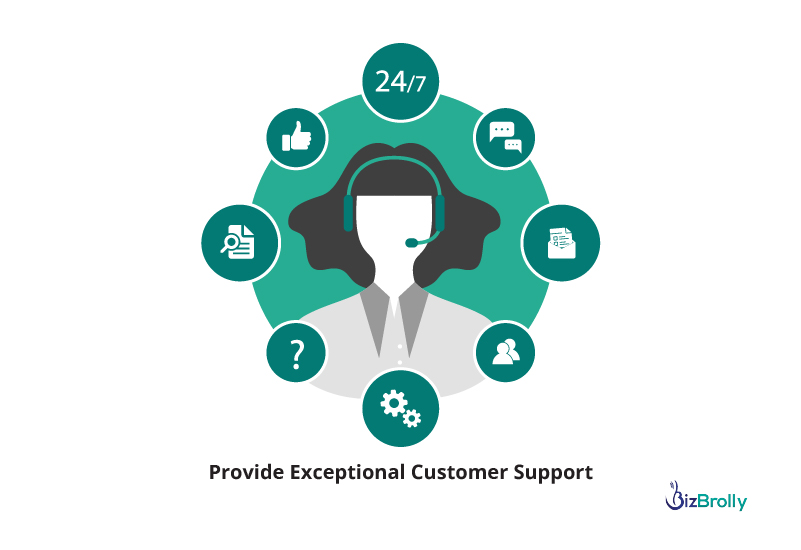
VIII. Mistake #8: Failing to Implement Monetization Strategies Early
Many developers overlook or delay the implementation of effective monetization strategies until after the game has launched. While it’s important to focus on creating an engaging and enjoyable experience for players, overlooking how to generate revenue can lead to financial difficulties down the road. Mobile game developers need to think about monetization from the start of the project, as an underdeveloped or ill-planned monetization strategy can severely hinder the game’s ability to become financially successful.
Conclusion: Setting Your Mobile Game for Long-Term Success
The launch of a mobile game is a significant achievement, but it’s just the beginning of a long journey. Avoiding the common mistakes outlined in this blog, such as poor testing, neglecting post-launch updates, and inadequate marketing, can significantly improve your chances of building a successful, sustainable game. By focusing on user experience, implementing strong monetization strategies early, and keeping players engaged through regular updates and community-building efforts, you set your game up for long-term success.
Remember, a successful launch isn’t just about initial downloads; it’s about keeping players engaged and satisfied long after the launch excitement fades. Effective planning, continuous improvement, and strategic marketing efforts all contribute to a thriving mobile game.
If you’re looking to ensure your mobile game launch is flawless, BizBrolly is here to help. As a leading software development company, we specialize in guiding game developers through the entire process, from concept to post-launch strategies. Whether you’re optimizing your game for success, tackling challenges, or planning your next big move, BizBrolly can support you every step of the way.
Get in touch with BizBrolly today and take your mobile game development journey to the next level!















